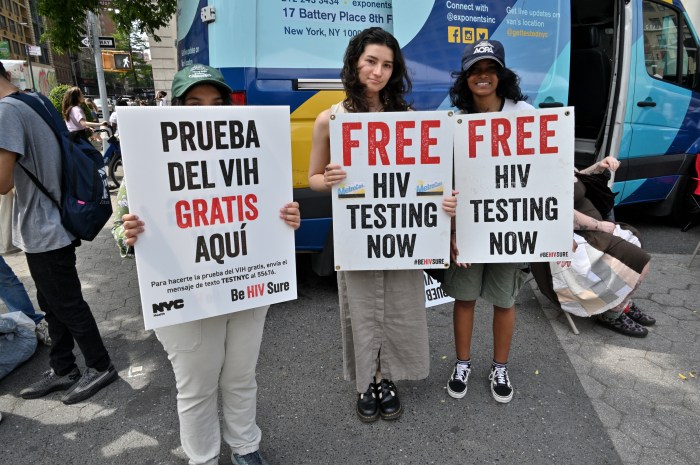BY CHRISTOPHER MURRAY | Crystal methamphetamine-known variously as meth, tina, crank, and ice, among other nomenclature-has over its century-long lifespan been the drug of choice of soldiers, cyclists, and Stepford wives intent on staying svelte.
The drug, a powerful stimulant, focuses attention, suppresses appetite, and chases away sleep, but also leads to dangerously intense crashes, clobbers the immune system, and is potently addictive.
Concern is running high among drug enforcement officials and addiction professionals as the drug seems poised to stretch into a sort of global crack epidemic with its one-two punch of a cheap, long-lasting high and easily accessible, although highly combustible, ingredients.
The drug's recent trail has wended from rural meth labs in the Midwest, to truly alarming saturation of certain subcultures in West Coast cities including Los Angeles and San Francisco. Likewise in New York, its impact can be seen among gay men with related spikes in HIV infection due to users' hyped-up sexual appetites and dumbed down attention to safer sex practices.
Manhattan psychiatrist Steven Lee's “Overcoming Crystal Meth” (Marlowe, $15.95 in paperback) is intended as a one-stop fix-it shop for users for whom the fabulous meth party has morphed into something more akin to Poe's “The Masque of the Red Death.”
Subtitled “An Essential Guide for Getting Clean,” this self-help book lays it all out, from the history of the drug, how it's made, and its damaging affects on the brain, to how to use more safely, how to figure out if you're hooked, where to find help, and how to return to a satisfying life crystal-free.
Lee sometimes falls into that trap of doctor-speak, alternating between overly scientific jargon (“the nucleus accumbens sends a dopamine-mediated signal to the ventral tegmentum”) and cutesy metaphors (“having gay sex can be like wandering through a flowery field filled with landmines”).
Still, the book is comprehensive and clearly written and Lee takes pains to be thorough in presenting the psychological factors, including low self-esteem and depression, that may lead someone to use in the first place, and then potentially to have trouble getting clean.
“Overcoming Crystal Meth” purports to be a general population book, but clearly Lee is focusing much of his attention on the current struggles of the gay male community with the drug. Significant portions of the book deal with concerns paramount to gay men-the impact of internalized homophobia on addiction, complicating factors with HIV disease, and the drug's prevalence at large-scale dance gatherings such as circuit parties.
The book is most effective when it focuses on clear, practical advice for managing specific problems associated with the drug. For example, workbook-style exercises help users evaluate the pros and cons of their meth use. Lee is also successful in laying out the impact of meth on brain chemistry, relating the science to the intransigence too many users face in trying to quit this drug in particular.
In a vivid and appropriate metaphor, Lee compares addiction to meth to riding a down escalator when trying to go up: “If you don't move your feet, the rolling staircase will take you lower and lower, to the depths that addiction takes you.”
“Overcoming Crystal Meth Addiction” provides the information and motivation to help addicts walk the walk away from a dangerously destructive drug. If you have concerns about your use, by all mean check it out.


































